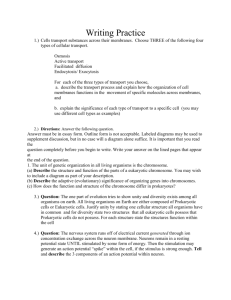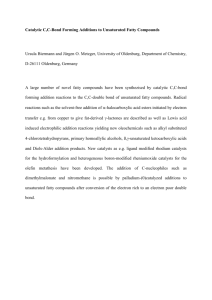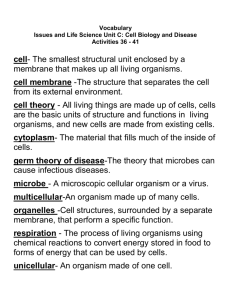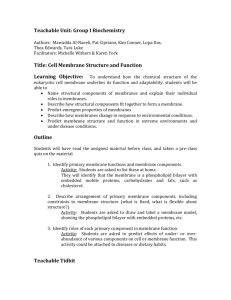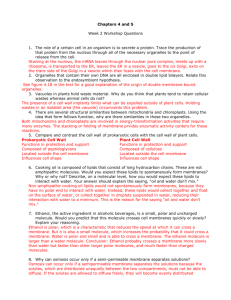Poikilothermic and Homoeothermic Organisms
advertisement
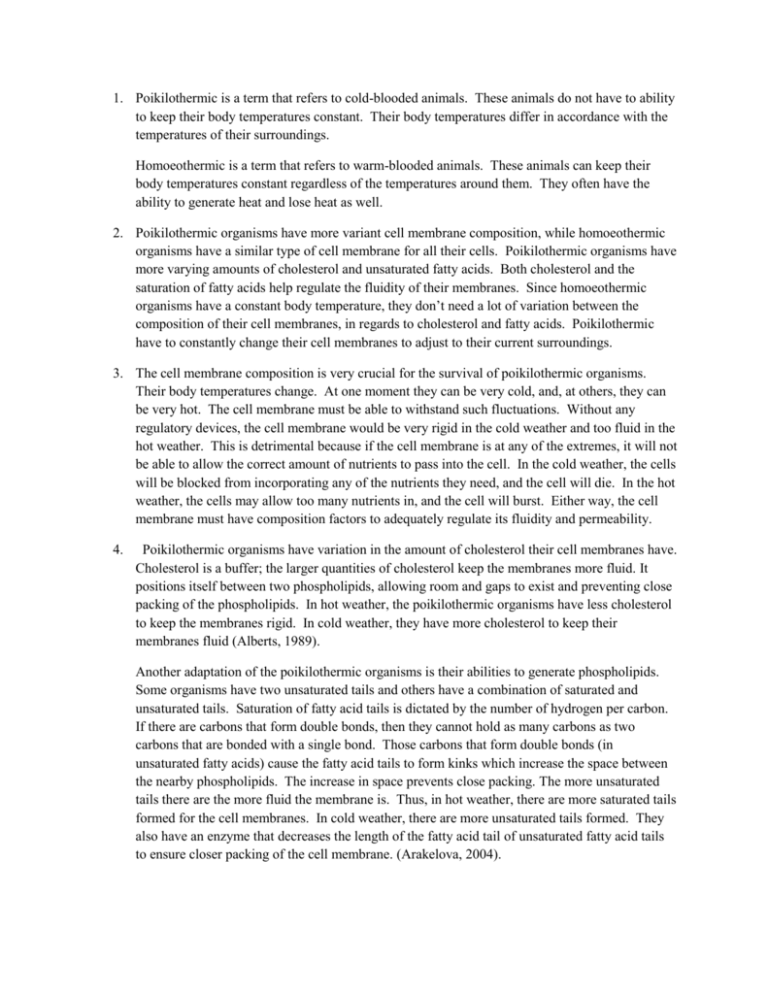
1. Poikilothermic is a term that refers to cold-blooded animals. These animals do not have to ability to keep their body temperatures constant. Their body temperatures differ in accordance with the temperatures of their surroundings. Homoeothermic is a term that refers to warm-blooded animals. These animals can keep their body temperatures constant regardless of the temperatures around them. They often have the ability to generate heat and lose heat as well. 2. Poikilothermic organisms have more variant cell membrane composition, while homoeothermic organisms have a similar type of cell membrane for all their cells. Poikilothermic organisms have more varying amounts of cholesterol and unsaturated fatty acids. Both cholesterol and the saturation of fatty acids help regulate the fluidity of their membranes. Since homoeothermic organisms have a constant body temperature, they don’t need a lot of variation between the composition of their cell membranes, in regards to cholesterol and fatty acids. Poikilothermic have to constantly change their cell membranes to adjust to their current surroundings. 3. The cell membrane composition is very crucial for the survival of poikilothermic organisms. Their body temperatures change. At one moment they can be very cold, and, at others, they can be very hot. The cell membrane must be able to withstand such fluctuations. Without any regulatory devices, the cell membrane would be very rigid in the cold weather and too fluid in the hot weather. This is detrimental because if the cell membrane is at any of the extremes, it will not be able to allow the correct amount of nutrients to pass into the cell. In the cold weather, the cells will be blocked from incorporating any of the nutrients they need, and the cell will die. In the hot weather, the cells may allow too many nutrients in, and the cell will burst. Either way, the cell membrane must have composition factors to adequately regulate its fluidity and permeability. 4. Poikilothermic organisms have variation in the amount of cholesterol their cell membranes have. Cholesterol is a buffer; the larger quantities of cholesterol keep the membranes more fluid. It positions itself between two phospholipids, allowing room and gaps to exist and preventing close packing of the phospholipids. In hot weather, the poikilothermic organisms have less cholesterol to keep the membranes rigid. In cold weather, they have more cholesterol to keep their membranes fluid (Alberts, 1989). Another adaptation of the poikilothermic organisms is their abilities to generate phospholipids. Some organisms have two unsaturated tails and others have a combination of saturated and unsaturated tails. Saturation of fatty acid tails is dictated by the number of hydrogen per carbon. If there are carbons that form double bonds, then they cannot hold as many carbons as two carbons that are bonded with a single bond. Those carbons that form double bonds (in unsaturated fatty acids) cause the fatty acid tails to form kinks which increase the space between the nearby phospholipids. The increase in space prevents close packing. The more unsaturated tails there are the more fluid the membrane is. Thus, in hot weather, there are more saturated tails formed for the cell membranes. In cold weather, there are more unsaturated tails formed. They also have an enzyme that decreases the length of the fatty acid tail of unsaturated fatty acid tails to ensure closer packing of the cell membrane. (Arakelova, 2004). Works Cited Alberts, B. (1989). Molecular Biology of the Cell. Oregon: Courier Corporation. Arakelova, K. S., Chebotareva, M. A., & Zabelinskii, S. A. (2004). Physiology and lipid metabolism of Littorina saxatilis infected with trematodes. Diseases of Aquatic Organisms, 60, 223-231. Retrieved from Inter-Research Science Center database.

